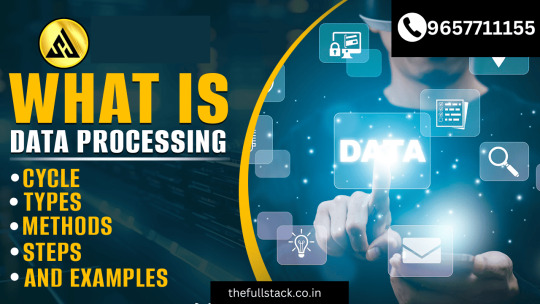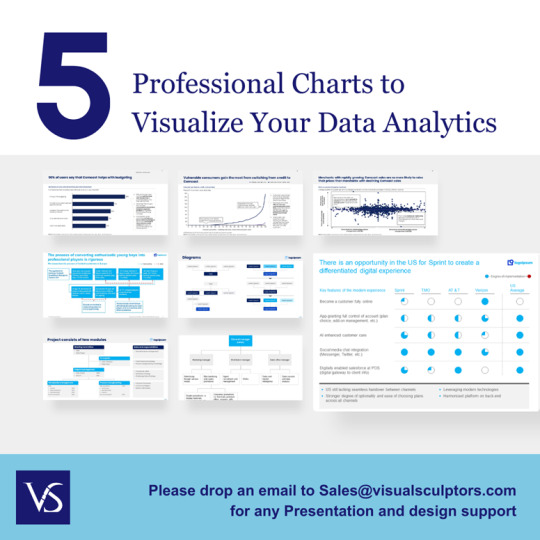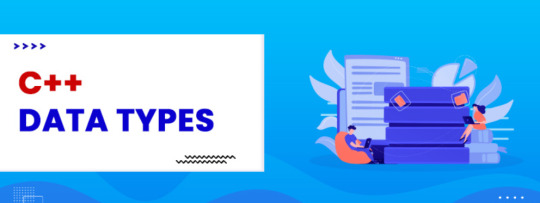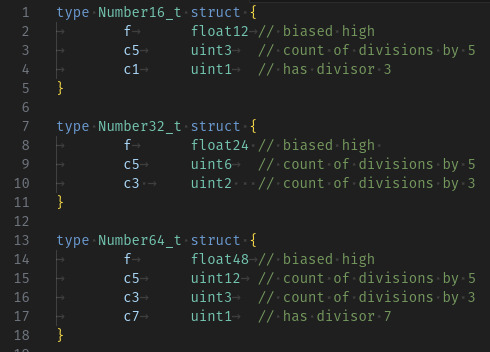#datatype
Explore tagged Tumblr posts
Text
youtube
C++ Boolean DataType in Hindi | What is Boolean Data Type in C++ | C++ Tutorials
In C++, the bool data type is used to store Boolean values, which can be either true or false. This data type is commonly used in conditional statements and loops to represent binary states (true/false, yes/no, 1/0). For more details, Kindly check my website URL. https://www.removeload.com/cpp-boolean
0 notes
Text
youtube
0 notes
Text
What Is Data Processing: Meaning, Cycle, Types, Examples
Fundamentally, data processing turns unprocessed data into information that has significance. This is essential for handling and deciphering the massive daily inflow of data in the computer world. Data entry, validation, processing, and analysis are just a few of the varied duties involved. Information systems are built on data processing, which enables businesses to derive useful insights. Businesses can use this to track performance, make well-informed decisions, and gain a competitive edge. Decision-makers’ access to high-quality information is directly impacted by the accuracy and effectiveness of data processing. read more

0 notes
Text
The Importance of Data Types in Crafting Meaningful Visual Representations
1.What are the 5 different data types?
The five different data types are:
1. **Integer**: Whole numbers, both positive and negative, without decimals.
2. **Float**: Numbers that contain decimal points, representing real numbers.
3. **String**: A sequence of characters, used to represent text.
4. **Boolean**: A data type with two possible values, true or false.
5. **Array/List**: A collection of items, which can be of the same or different data types, organized in a specific order.
These types are fundamental in programming and data management, allowing for efficient data handling and manipulation.
2. What are the data types for data visualization?
Data visualization commonly employs several data types, including:
1. **Categorical**: Qualitative data divided into categories (e.g., gender, colors).
2. **Numerical**: Quantitative data represented as numbers, which can be further categorized as discrete (countable values) or continuous (measurable values).
3. **Time Series**: Data points indexed in time order, often used for trends over time.
4. **Geospatial**: Data associated with geographic locations, visualized on maps.
5. **Textual**: Unstructured data, often visualized through word clouds or sentiment analysis.
These types help convey complex information visually, enhancing understanding and insights.
3. What are 4 characteristics of data visualization?
Four key characteristics of data visualization are:
1. **Clarity**: It presents data in a straightforward manner, making complex information easy to understand.
2. **Interactivity**: Users can engage with visuals, allowing for deeper exploration of data insights.
3. **Aesthetics**: Effective use of colours, shapes, and layouts enhances visual appeal and comprehension.
4. **Accuracy**: It accurately represents data without distortion, ensuring viewers can trust the insights presented.
4. How to visualize classification data?
To visualize classification data, use scatter plots to display data points in two dimensions, coloring them based on their class labels. For higher-dimensional data, employ techniques like PCA or t-SNE to reduce dimensions before plotting. Confusion matrices can illustrate model performance, while bar charts and ROC curves help compare classifier accuracy and performance metrics. Additionally, decision boundaries can be visualized with contour plots for simpler classifiers. Tools like Python facilitate these visualizations effectively.
5. What are the 4 elements of data?
The four elements of data are:
1. **Collection**: Gathering raw data from various sources, such as surveys, sensors, or databases.
2. **Processing**: Transforming and organizing the collected data into a usable format through methods like cleaning, sorting, and analyzing.
3. **Storage**: Safely saving the processed data in databases or data warehouses for future access and retrieval.
4. **Analysis**: Interpreting the stored data using statistical tools or algorithms to extract insights and inform decision-making.

Visit: VS Website See: VS Portfolio
0 notes
Text
Signed vs Unsigned Data Types in SQL: A Technical Perspective
1 note
·
View note
Text
C++ Datatypes
Here are the seven basic C++ data types:
Boolean
Character
Integer
Floating point
Double floating point
Valueless
Wide character
Many of these basic data types can be modified. If you want to dive further into the topic, go through the below link.

0 notes
Text
Outsourcing Typing Services: Save Your Time in An Affordable Way

For more information about Invoice data entry services please visit us at: https://latestbpoblog.blogspot.com/2023/10/outsourcing-typing-services-save-your-time-in-an-affordable-way.html
Your company can complete a project more quickly and effectively by outsourcing typing services. Your business will also be more productive, flexible, and efficient and can concentrate on its main strengths, which offer an affordable means to accelerate these procedures while maintaining accuracy and speed. By visiting the blog mentioned above, you can learn how to save your money and time affordably by outsourcing typing services.
#OutsourcingTypingServices#OutsourceTypingServices#OutsourceTyping#OutsourceDataTypingServices#DataTyping#TypingCompanies
1 note
·
View note
Text

python int()class - Binary-Octal-Hexadecimal-Decimal also integer Datatypes
#python list class#python datatypes#python training in guntur#python training hyderabad#python jobs hyderabad#django jobs hyderabad#flask training hyderabad
1 note
·
View note
Text
youtube
C DataTypes | DataTypes in C | Example of C DataTypes
In C programming, data types specify the type of data that can be stored in a variable. They define the operations that can be performed on the data and the memory required to store it. Below are the primary categories of data types in C.
Kindly check below URL which has complete details of C DataTypes. https://www.removeload.com/c-data-types
0 notes
Text
Small Business Benefits of Excel Data Entry
Excel data entry provides numerous benefits specifically for small businesses. Here are some key advantages of using Excel for data entry in a small business context:
👉 Cost-Effective Solution: Excel is a cost-effective option for small businesses as it is widely available and typically included in the Microsoft Office suite. There is no need for additional software or licensing fees, making it a budget-friendly choice for data management.
👉 Easy to Learn and Use: Excel has a user-friendly interface and is relatively easy to learn and use, even for individuals with limited technical skills. Small business owners or employees can quickly grasp the basics of data entry in Excel, minimizing the learning curve and allowing for immediate implementation.
👉 Customizable for Specific Needs: Excel offers flexibility in designing spreadsheets tailored to the specific needs of a small business. Whether it is tracking inventory, managing sales data, or creating financial statements, Excel allows for customization and adaptation to the unique requirements of the business.
👉 Data Organization and Management: Excel provides a structured framework for organizing and managing data. Small businesses can efficiently store, sort, and filter data, ensuring easy access and retrieval of information when needed. This helps streamline day-to-day operations and supports better decision-making.
👉 Analysis and Reporting: Excel's built-in formulas, functions, and charting capabilities enable small businesses to analyze data and generate meaningful reports. By leveraging these features, business owners can gain insights into sales trends, financial performance, and other key metrics, aiding in strategic planning and business growth.
👉 Integration with Other Systems: Excel can integrate with other software and systems commonly used in small businesses. For instance, you can import data from accounting software, CRM systems, or e-commerce platforms into Excel, allowing for seamless data integration and consolidation.
👉 Scalability: Excel is scalable, accommodating the growth of a small business. As the business expands and data volume increases, Excel can handle larger datasets and accommodate additional functionalities, making it a scalable solution for data entry and management.
👉 Collaboration and Communication: Excel facilitates collaboration within a small business. Multiple users can work on the same spreadsheet simultaneously, enabling team members to input and update data in real-time. This promotes effective communication and coordination, leading to improved productivity and efficiency.
👉 Overall, Excel data entry offers small businesses a cost-effective, versatile, and user-friendly solution for organizing, analyzing, and managing data, supporting their operational and decision-making needs.
So, if you are looking for someone who can turn your huge amount of data into useful information then look no further your answer is right HERE.
#excelwork#exceldataentry#dataentrywork#pdftoexceldataentry#pdftoexcel#screenshottoexcel#excel#GoogleSheets#spreadsheets#copypaste#dataentry#datacollection#datatyping#datascraping#datamining#productlisting#dataextraction
0 notes
Text
youtube
0 notes
Text
In this tutorial, we will cover the basics of variables in MATLAB, including how to create and manipulate them.
#matlab#study material#tutorial#datatypes#machine learning#data science#medium#medium writers#programming#computer science#student#coding
0 notes
Text
I have this idea for a datatype that I'm not sure is a good idea but it's at least neat.

(uints packed into bitsets of course)
You'd still run into funny business around unrepresentable numbers, but we do tend to divide by 3 and 5 a whole lot more than all the other prime numbers that floats don't represent well (3 because sometimes there are 3 of a thing, 5 because every division by 10 is a division by 2-and-5)
NB: When I say "float biased high" what I mean is - stealing a quarter of the bits for prime number divisors lets you create exact representations of various rational numbers you otherwise couldn't, but costs you stuff at the high end - so this probably wouldn't be IEEE-754 but instead shifted over by however much the prime divisors stole.
22 notes
·
View notes
Text
I usually do not recommend apps because I hate things that look like advertisements, but I recently took a long journey down the road of "I want to backup an SMS conversation with tens of thousands of messages" and ran into so many roadblocks and pitfalls that I wanted to share the only thing that seems to have worked. I am also sort of hoping that people with more Android chops will say something like "oh you missed officially-supported option XYZ" or something like that.
1. Google will backup your SMS but unless you pay for Google One, your MMS will be lost—so all the photos etc in the thread are gone.
2. Moreover what is in Google One will not be downloadable into a format that you control. The only option is to port to a new phone.
3. Moreover even if you use Google Takeout to try to download that archive from Google One, the result is busted and doesn't include said media.
4. Many of the other apps have a "free trial" that is so hampered that you cannot actually make a single archive.
5. The app I found will export a massive XML file to one of several filesharing services—Google Drive, Dropbox, and Onedrive—as well as a local backup that can presumably be ported over USB. The app has an associated web viewer, which has problems with loading all the videos and pictures in a long text chain, presumably because it is trying to cram the entire thing into the DOM. If you unselect loading those, you can "click to load" them afterwards, and this works, although it can cause the scrolling to get lost.
6. However, the fact that it's an XML file means you can do SAX parsing of it, even though there could be 100MB videos in the "data" attribute of some of the tags (!). I've already been experimenting with doing that—written a little parser that sends everything to an SQLite3 database.
7. The format of the dump seems to be. "smses" is the root tag pair, and within it are tags of type "sms" and "mms". "mms" can contain two children, "parts" and "addrs". A "parts" tag can contain multiple "part"s which contain the "meat" including the "data" attributes, which seems to be where all my pics and videos have gone. An "addrs" tag contains "addr"s that seem to be just participating conversationalists. There's a hell of a lot of metadata stored in the attributes, not all of which I have deciphered beyond the datatype of each field.
8. I think I want to actually do the whole SQLite3 song-and-dance and just dump pictures and videos to some static folders. Then you could write a small local webserver to deliver a properly scrollable and searchable version. But right now, having a backup that I can save to a USB or several is really comforting.
15 notes
·
View notes
Text
if i am using a function in a dynamically typed language then i don't know what type the input arguments are. this causes breakage of my monitor
why do dynamically typed languages exist
#seriously the amount of times i have used an undocumented API#and i have had to read awful awful function code to figure out what I'm supposed to send into the function#just because the argument doesn't have datatype restrictions#youre right i will start chewing the wires next time maybe it'll help
183 notes
·
View notes